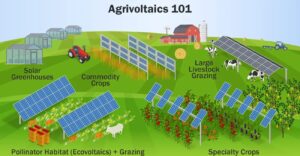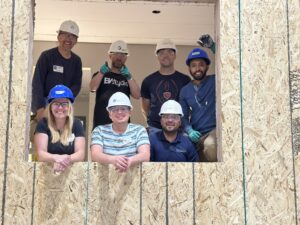The first step in preparing for the LEED Certification process on a building project is the formation of the LEED Project Team. Integrated design is one of the most important sustainability strategies and a good project team will become the key to an integrated, efficient, cost-effective and ultimately successful sustainable design and LEED Certification project. It is important to include as many of the Project Team members as may be needed early in the process because this allows for a more seamless flow of information and work and allows for the valuable input of multiple experienced and knowledgeable stakeholders in the project from the onset. Every project will have a different team formation because every project will have different needs and sometimes multiple roles may be filled by a single team member. The following list includes some of the most common team members that may be included on a LEED project:
- Project Administrator – By default, the person who registers the project with the USGBC will become the Project Administrator for LEED Online. This person should be a LEED-AP (accredited professional), if possible, and should be experienced and knowledgeable about LEED certification projects and process. This person is responsible for managing the assignment of team roles in LEED Online and the management of all of the LEED documentation and coordination throughout the LEED certification process.
- Developer / Owner – This is the person responsible for making the final decisions for the project including all strategies, targets, project goals, financial decisions etc.
- General Contractor – This is the person responsible for the construction of the project and plays a key role in assuring that all of the LEED strategies and design elements are effectively and efficiently carried through to reality. It is helpful if this person has previous experience with LEED or green building projects but not essential if they are included in the process from the beginning of the project and there is a LEED-AP or experienced Project Administrator on the project team.
- Sustainability Consultant – This person is knowledgeable and experienced with LEED, green building or sustainability projects. This person should be a LEED-AP as well and will provide valuable knowledge, resources and structure to the LEED certification process.
- Architect / Designer – This is the person responsible for the architectural design of the building. An architect with experience in LEED or other green building or sustainability projects can skillfully include highly effective, low-cost sustainability strategies into the design of a high performance building such as passive solar design, reduced building footprint, etc.
- Landscape Architect – This is the person responsible for the landscape planning of the site and can also skillfully include a number of highly effective, low-cost strategies into the design that will benefit the project goals and LEED certification.
- Engineers – This category may include Civil Engineering, Structural Engineering and MEP (Mechanical, Electrical & Plumbing) Engineering. The engineers are responsible for a large portion of the LEED criteria, including both pre-requisites and credits and are the key to designing a truly integrated and efficient building design.
- Energy Modeler – This team member will model the energy usage of the building according to the required standards and utilizing the required software platforms that conform to LEED criteria and a myriad of additional modeling needs that may be included in the project goals such as analysis for tax incentives, energy rebates and additional building or energy certifications for the project.
- Commissioning Authority – This is the person responsible for organizing, coordinating & overseeing the Commissioning of the building after construction and according to the LEED criteria, must have previous experience on a minimum of two LEED projects. Although the commissioning does not take place until after the major building systems have been installed and are operational, it is very helpful to include this team member early in the process so that they can provide valuable information, resources, real-world experience and knowledge from their previous LEED projects.
These team members are essential to the success of a LEED certification and building process and each of the above mentioned roles should be filled in some capacity. As previously mentioned, it is possible that a single team member may fulfill several of the above mentioned roles. For example, it is common for the MEP Engineer to also be the Energy Modeler and even sometimes the Commissioning Authority or for the Architect or Designer to be the Project Administrator and/or Sustainability Consultant. The following list includes some more team roles that are helpful to a LEED certification project and should be included in the Project Team meetings whenever possible:
- Broker / Real Estate Agent
- Marketing / PR Director
- Financial Manager / Cost Consultant
- Facility Manager
- Suppliers
- Key Sub-contractors
- Key Stakeholders (building tenants, users, community members)
EVstudio includes several LEED-AP’s who are experienced on previous LEED certification projects. In addition, EVstudio incorporates green building practices and sustainability strategies into our design strategies for each project. There are many strategies that improve livability without increasing cost. It is our philosophy that sustainable design is sensible design and that many of the most effective strategies require great designers, not great amounts of money.











2 thoughts on “LEED Project Team Formation is an Important First Step in any LEED Certification Project”
Brian,
One of the most important sustainable concepts, in my opinion, is that EVERY project & every site is unique and will require a unique combination of project team, strategies and processes. True sustainability is not just about the environmental aspects, but about the economical and social aspects of the project as well. While it is beneficial to have the entire team involved in the process at the earliest point in the project, that is not always possible, as you have pointed out.
There are a number of ways that you could handle this situation, but my main recommendation would be to put out an RFP for a LEED Consultant who can help you handle some of these issues and can assure that the information is effectively communicated into subsequent RFPs and to the selected project team members as they enter the project (especially the contractor). As I mentioned in the article, you can select a LEED Consultant that fulfills several of the project team roles and has the ability to build the value of effective communication and collaboration into the project from the beginning. The important thing is that everyone involved in the project clearly understands the project goals and strategies and that the opportunities for integration and collaboration among team members are continually sought, to the highest degree possible. This will create the most successful and sustainable project under the unique circumstances that comprise your project!
Good article but creates a dilemna for my agency.
I work for local government and we have a project to build a facility for storing, maintaining and repairing transit vehicles. Everyone we hire we are required to solicit bids.
How do we solicit a contractor if we do not yet have design specs?
Know of any RFPs for LEED personnel I could take a look at ?
Is there one of the listed team positions you would recommend hiring first who would then organize the Team including RFPs for additional Team members?
Comments are closed.